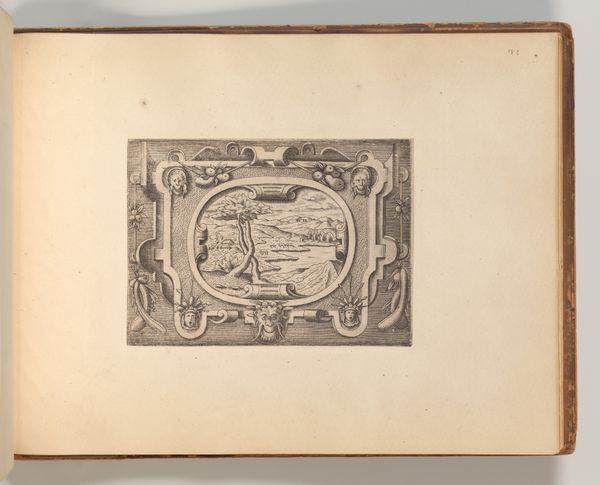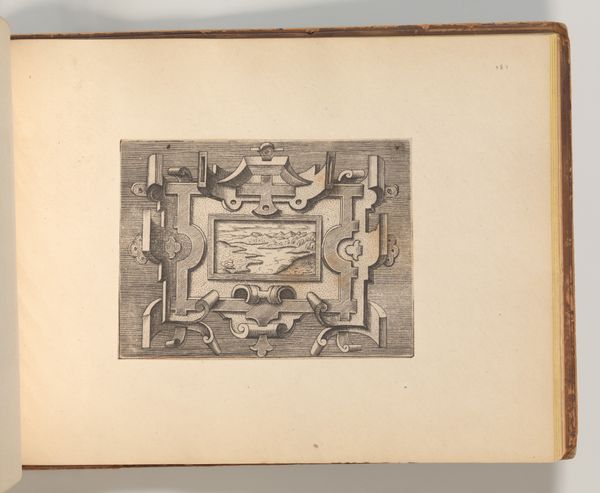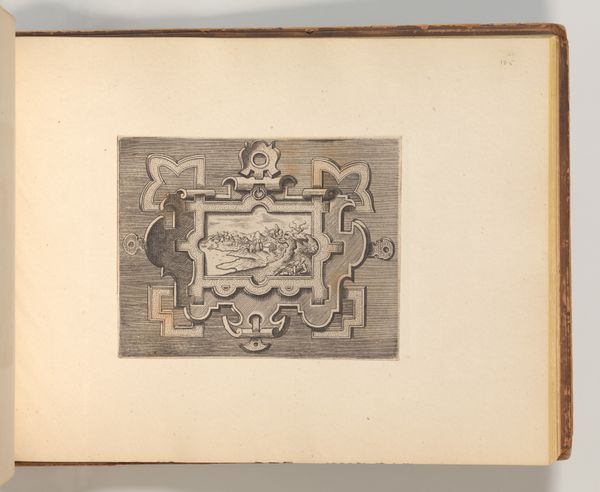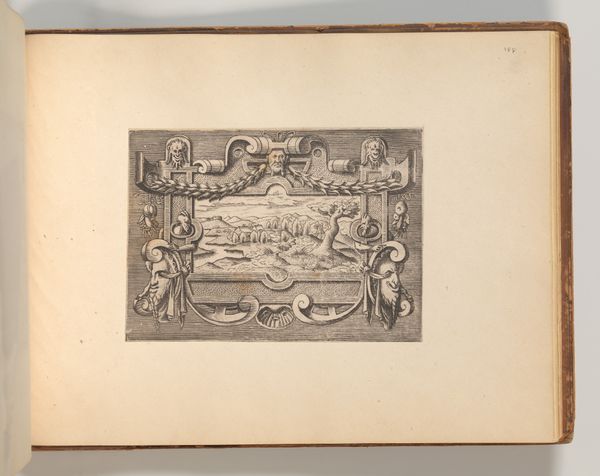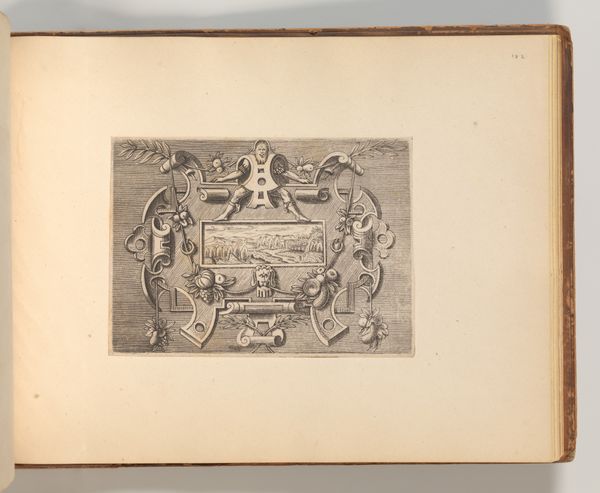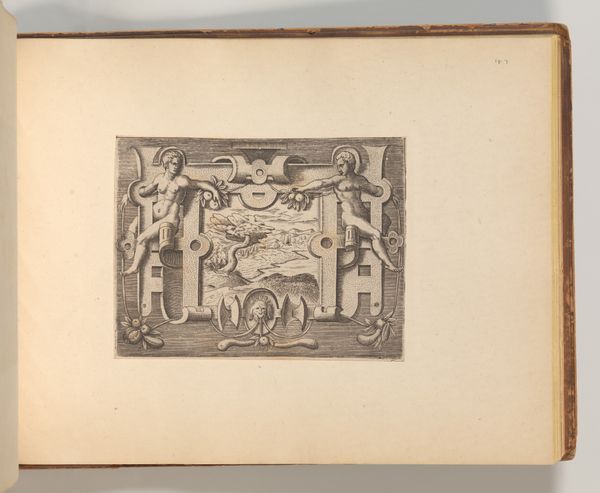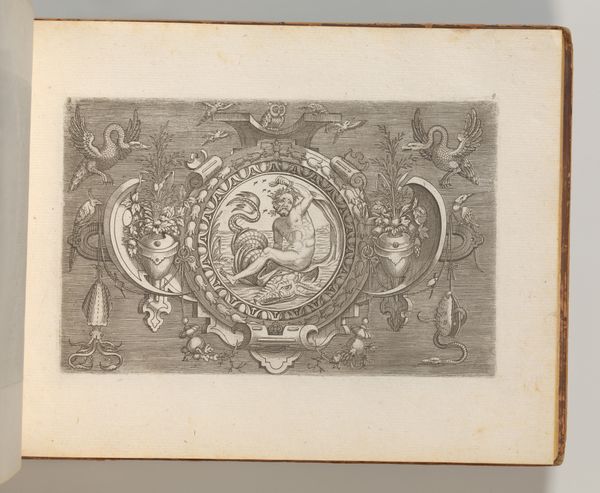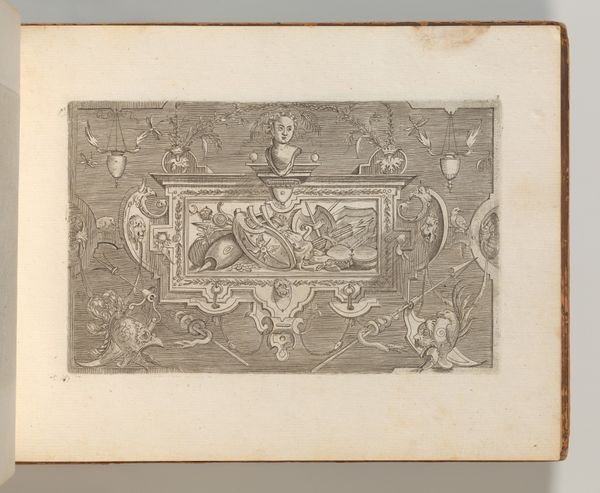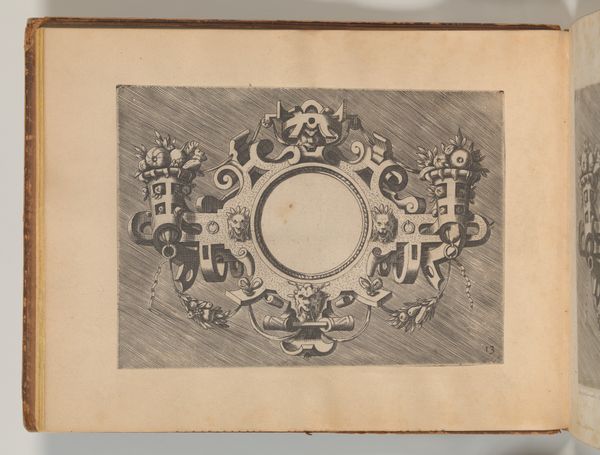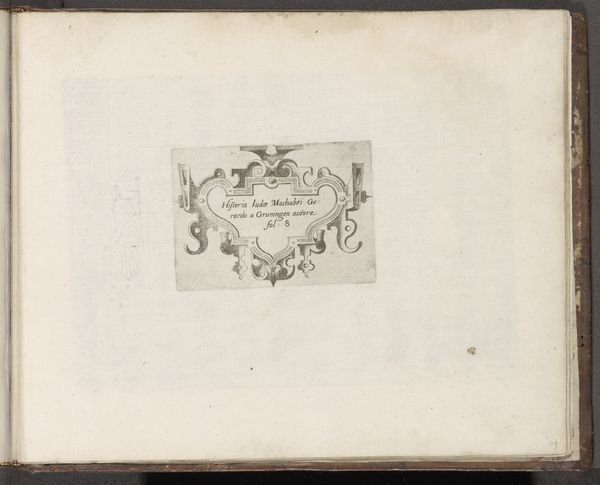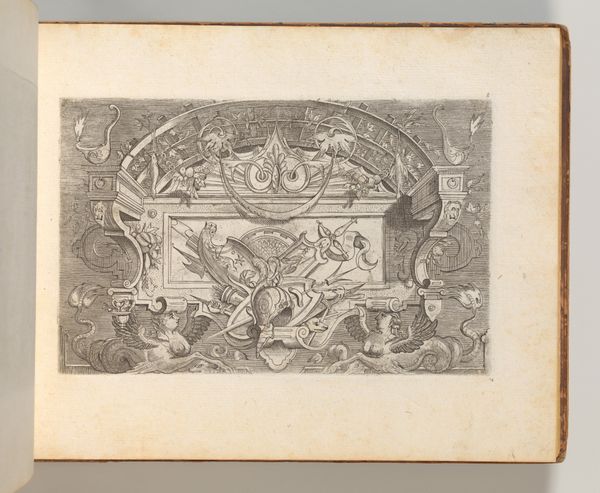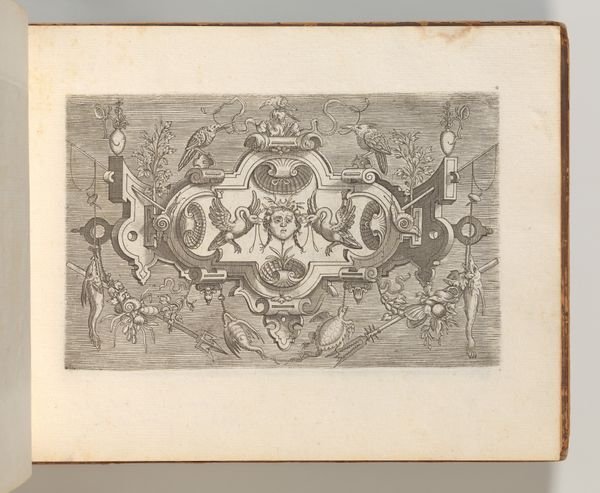
Series of Cartouches, in: Targhe ed altri ornati di varie e capricciose invenzioni (Cartouches and other ornaments of various and capricious invention, page 53) 1540 - 1560
0:00
0:00
drawing, print, engraving
#
drawing
#
ink paper printed
# print
#
mannerism
#
11_renaissance
#
history-painting
#
engraving
Dimensions: Sheet: 7 7/8 × 10 5/16 in. (20 × 26.2 cm) Plate: 5 1/8 × 11 13/16 in. (13 × 30 cm) Overall: 8 1/4 × 10 5/8 in. (21 × 27 cm)
Copyright: Public Domain
Curator: I find this sixteenth-century engraving, titled "Series of Cartouches," to be truly fascinating. It’s attributed to Cornelis Bos and is currently held in the collection of the Metropolitan Museum of Art. Dating from between 1540 and 1560, the work presents a wonderful example of the Mannerist style. Editor: It's ornate, even busy. There’s almost too much going on, yet the overall impression is quite serene. The cherubs and the central landscape, especially. They’re almost at odds with the severe architectural elements. Curator: The tension you're picking up on speaks directly to the Mannerist style. The period embraced artificiality over naturalism, creating these almost jarring juxtapositions. Prints like these, these cartouches, were highly influential because of their reproducibility. They circulated throughout Europe, informing interior design, furniture making and architectural details in ways we still see echoed today. Editor: Thinking about reproduction and access… It strikes me how these intricate borders are almost a cage around the more pastoral scene within. The ruling classes controlling not just land, but representation itself. They curate what "landscape" and "beauty" mean, controlling those narratives too. Curator: That's an interesting angle. These prints certainly played a role in shaping aesthetic preferences, though I hesitate to assign such deliberate control. Perhaps the function was more celebratory, providing frameworks of status and power. Editor: Power, definitely, even if unconscious. The very act of framing – literally and figuratively – dictated whose stories were valued and preserved. The idealized, perfectly contained scene… It speaks volumes about how power attempts to curate reality. Curator: You've given me something to think about; seeing these elaborate borders not merely as decoration but also as potential statements on controlled perspectives. Thank you. Editor: Of course! For me, viewing these pieces requires recognizing their complex relationships with structures of power and inequality. To extract meaning for the present and for the future.
Comments
No comments
Be the first to comment and join the conversation on the ultimate creative platform.
